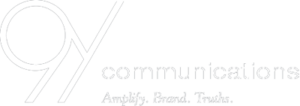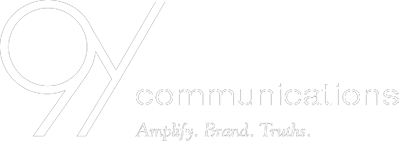In a world where every new app, algorithm change or platform “hack” promises growth, small‑business owners increasingly feel that they’re chasing visibility rather than value. You’re posting, advertising, commenting—and yet something still feels off. Because guests show up, but they don’t stay. They convert, but don’t stick.
That’s the core of the problem: doing everything, everywhere, dilutes your message, drains your resources—and ultimately erodes your ability to build connection.
In 2025, the smarter move isn’t about more channels—it’s about the right channels. It’s about saying “no” to distraction, “yes” to intent—and building presence where your customers are already living, breathing and deciding.
Data Insight: What the Trends Are Saying
The latest report from Deloitte highlights how digital‑media consumption is shifting—social video platforms and creator‑led content are now large drivers of attention and ad spend. Meanwhile, smaller business‑focused trend pieces identify that the most effective channels for SMBs in 2025 include local SEO, focused email, and social platforms like TikTok and Instagram.
What this means: Your audience is not scattered across a hundred platforms—they cluster, shift and focus. The businesses that win will pick their spots and show up consistently.
Why These Channels Dominate
1. Local SEO
Your business may be local, regional or niche—but the moment someone searches “near me”, your visibility depends on your local footprint. When you show up right there, you connect intent with action.
2. Email
Yes, email still matters. It’s one of the few “owned” channels you control, not algorithm‑driven. If you build a list, send purposeful content, and respect your audience’s time, you create a direct line to people who already know you.
3. TikTok & Instagram
These platforms are not just youth experiments—they’re attention economies. Social video is growing rapidly, and small businesses that lean into authenticity, community, and culture—not polished perfection—see real return.
Why these four (instead of ten)? Because each aligns with a need: discovery → relationship → culture → retention. And because spreading thin across many channels means no channel gets your full intention.
Keys to Success – Aligning Channel Choice with Brand Purpose & Audience
- Articulate your core audience: Where are they spending time? What problems are they solving? What language do they use?
- Map those behaviors to channel possibilities: If your audience is local and service‑based (e.g., HVAC, dental, boutique retail), invest more heavily in local SEO & Instagram. If you’re national and visually rich (e.g., artisan products, creative services), lean Instagram + TikTok + email.
- Set your resource boundaries: How much time and budget do you realistically have? Choose 1‑2 channels to focus on, do them well, and ignore the rest.
- Commit to consistency: Pick your channel(s), define a plan (e.g., 3 posts/week, one newsletter/month, one local SEO check every quarter) and stick to it.
- Monitor metrics that matter: Are you seeing discovery → engagement → conversion? Numbers tell you if your chosen channel is working—or if you need to pivot.
Empowering Small Business Owners
Your time and effort matter. Your brand deserves clarity, not chaos. When you focus your digital strategy, you treat your audience with respect—they get a consistent signal from you instead of noise. You also protect your own well‑being, because you’re not trying to be everywhere at once.
Small‑business growth doesn’t need to feel frantic. It needs to feel sustainable. It needs to feel true to why you started in the first place. By choosing the right channels, you honor your own mission—and invite your customers to honour it back.
Fractional CMO Insight: How a Strategic Channel Plan Fuels Sustainable Growth
In my work as a fractional CMO, I start every engagement with the channel decision. At first glance, clients want to “be on TikTok, LinkedIn, Snapchat, YouTube” all at once. I ask: “Why? And what will you sustain six months from now?” The honest answer is often: “We’ll drop three of them soon.”
We then reduce to 1–2 channels, create a straight‑line plan (content types, timing, budget), and review every quarter. That disciplined focus becomes the engine of growth. Because instead of chasing noise, we build repeatable motion. Instead of spreading thin, we grow deep.
So if you’re asking: “Which channels should I invest in this year?” — the answer isn’t a big laundry list. It’s a shortlist that reflects your brand, your audience and your capacity to show up long‑term.
Conclusion: Focus + Authenticity = Winning in 2025
In 2025, visibility is not the same as value. What matters is where you show up, how you show up, and whether you follow through.
When you pick fewer channels—and commit fully—you build presence that matters. You build relationships that endure. You build a business that doesn’t chase every trend but stands for one thing, consistently.
Start small. Pick where your audience lives. Show up with purpose. Then scale thoughtfully. The rest will follow.
FAQ: Choosing the Right Marketing Channels in 2025
Q1: What are the most effective digital marketing channels for small businesses in 2025?
The top‑performing channels for SMBs this year are local SEO, email marketing, and social platforms like TikTok and Instagram. These platforms help small businesses meet customers where they’re already active—and build authentic engagement.
Q2: How do I choose the best channel for my small business?
Start by identifying where your target audience spends time and what kind of content they engage with. Then align your channel selection with your brand’s strengths and your team’s ability to show up consistently.Q3: Is it better to be on all platforms or focus on a few?
Focus on a few. Spreading your marketing across every platform leads to diluted results and wasted resources. It’s far more effective to go deep on 1‑2 platforms your audience truly uses.Q4: How does a fractional CMO help with channel strategy?
A fractional CMO brings strategic clarity. We assess your audience, align channel strategy to your goals, and build a focused plan that’s scalable and sustainable over time.- Written by: admin
- Posted on: November 11, 2025
- Tags: 2025 trends, digital marketing strategy for small business, local SEO 2025, marketing channel selection tips, small business marketing, TikTok marketing for business

